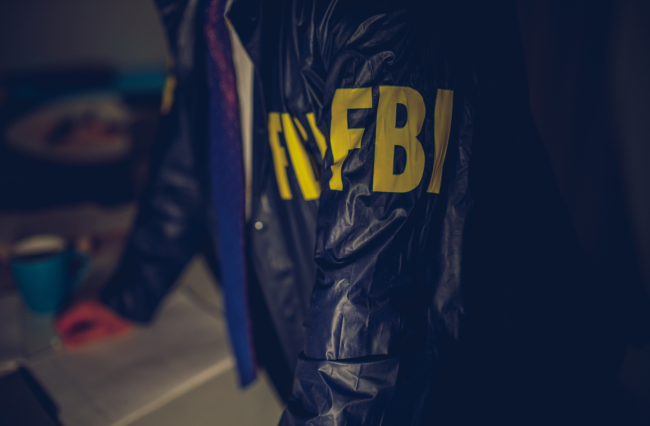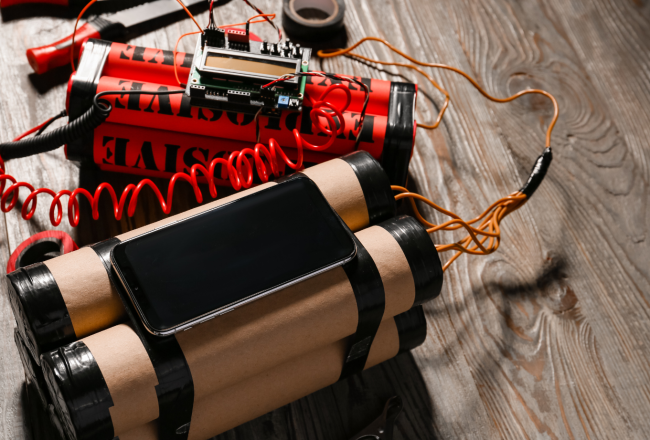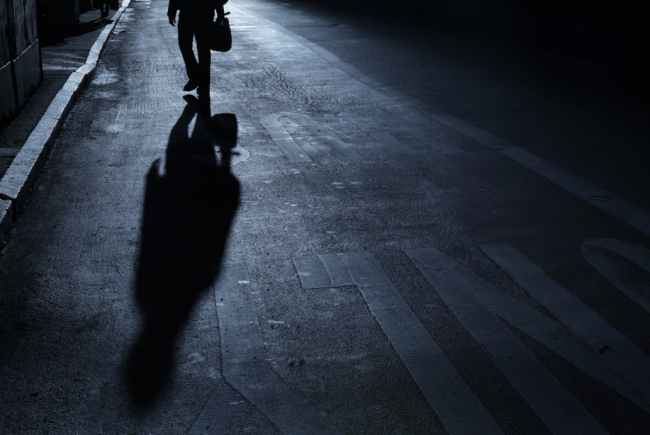Declassified FBI Secrets You Didn’t Know
In its history of over 115 years, the FBI have kept secrets that would make your favorite spy novels look like child’s play. From undercover operations, to different methods of secret writing ink, to stranger than fiction Bigfoot files, the FBI have been keeping busy, and these declassified FBI secrets will keep you on the edge of your seats, I promise you.

The Main Declassified FBI Secrets You Didn’t Know
Thanks to official declassified documents, government leaks, and revealing reports we can now learn more about our government’s secret programs than ever before. Take your popcorn and let’s dive into these mind blowing declassified FBI secrets we know so far.
1. The Bigfoot files
In the swinging ’70s, the FBI was embroiled in a hairy situation that would raise more than a few eyebrows—and it wasn’t your typical mobster or spy story! You see, it was the era of disco, bell-bottoms, and, apparently, Bigfoot investigations.

Peter Byrne, the head of the Bigfoot Information Center (cool title, right?), pinged the FBI with a peculiar request in 1976. He had this bundle of mysterious hairs that had the potential to shake the foundations of zoology. To add a dash of drama, he mentioned that these were the first unidentified hairs they’d gotten their hands on in half a decade! Byrne believed they might finally have solid evidence of the elusive Bigfoot.
With a kind of “Why not?” attitude, FBI Assistant Director Jay Cochran—who typically was knee-deep in criminal investigations—decided to humor Byrne. He agreed to analyze this potentially groundbreaking sample, though he did point out that Bigfoot wasn’t on the FBI’s Most Wanted List.
So, the FBI delved deep, using all sorts of light microscopy and morphological examinations to uncover the origins of the mysterious hair sample. But finally, the results were… anticlimactic.
So, was it Bigfoot in those declassified FBI secrets?
In what probably felt like a sitcom moment, Cochran responded that the hairs, drumroll please… belonged to a deer! Talk about a wild goose—or should we say deer?—chase.
In 2019, 93-year-old Peter Byrne spoke to CNBC, still clinging to the same unwavering belief that Bigfoot is real. Peter’s fascination stemmed from his childhood. His father would read him bedtime tales about the Yeti from the Himalayas. The webpage dedicated to his adventures recounts his first Yeti hunt in 1946 when he was with the British Royal Air Force stationed in Bombay, India. Memories captured in photographs show Peter alongside the famed “Yeti scalp” in a Nepalese temple in 1958 and another with a gigantic potential Bigfoot footprint.
Anyways, in 2019, the FBI themselves declassified these Bigfoot files, and we can’t help but have a little laugh or get annoyed at how they would spend their funds…that’s up to you.
2. The Hindenburg Zeppelin Disaster
On May 6, 1937, the Hindenburg, a German blimp, caught fire and crashed while attempting to dock in Lakehurst, New Jersey. Amid the political tensions of the era and the rise of Nazi Germany, speculations of sabotage as the cause of the disaster rapidly emerged. As a result, the FBI launched an investigation parallel to the one conducted by the Department of Commerce to determine if the disaster was caused by sabotage.
FBI agents interviewed crew members, passengers, ground personnel, and others who might have had relevant information. They gathered statements and tried to reconstruct a timeline of events leading up to the disaster.
One prominent theory the FBI investigated was that a bomb had been planted aboard the blimp. Some believed that anti-Nazi factions might have been responsible, intending to carry out an act of resistance against the rising German regime. However, no concrete evidence supporting this theory was found.
Moreover, the FBI collaborated with experts to analyze the physical evidence from the wreckage. They considered other possibilities, such as a static spark igniting the hydrogen, which was the airship’s primary lifting gas. Overall, the FBI’s investigation did not uncover any definitive proof of sabotage. The exact cause of the disaster remained (and remains) a topic of debate among experts.
Over time, the FBI has made many of its files related to the Hindenburg disaster available to the public, primarily through the Freedom of Information Act (FOIA). These files offer a detailed look at the agency’s processes and the many leads and theories they explored.
If you’re interested in more specific information, you can find and read the original files and reports from the Hindenburg disaster on vault.fbi.gov – the FBI’s open website of public information dubbed “The Vault”.
3. The Hazardous Devices School
This is not really a declassified FBI secret, but it’s worth mentioning how the FBI set the foundation for the Hazardous Devices School in Huntsville, Alabama.

In the 1960s and early 1970s, the U.S. witnessed a surge in bombings and bomb threats. While local law enforcement agencies had some capabilities to handle these threats, there was a clear need for standardized training and protocols.
As a result, the FBI began to work on providing a structured training program for bomb technicians. That’s how they founded the Hazardous Devices School in 1971, in collaboration with the U.S Army. The curriculum is designed to provide both basic and advanced training in bomb disposal techniques. The school teaches based on feedback from bomb squads across the country, and emerging technologies to ensure that its training remains state-of-the-art.
Here, trainees are immersed in lifelike scenarios, from motel rooms filled with explosives to simulated airports, churches, and movie theaters. These exercises prepare technicians for real-world situations involving improvised explosive devices (IEDs). Given the growing global threat from IEDs, with thousands of casualties reported in recent years, the training offered at HDS is critical.
Yes, it’s a bomb school and it’s no FBI secret
Beyond on-the-ground scenarios, the school also focuses on technological advancements in bomb disposal. If in the 1980s, bomb disposal experts would fire a shotgun at a specific component of the bomb to disable the device, nowadays they use high-tech PAN disrupters, high-speed jets of water or even robots operated via remote video links.
In essence, HDS offers comprehensive training for bomb technicians, ensuring they are well-equipped to handle any explosive threat they might encounter in the field.
So, the Hazardous Devices School stands as the main institution for training and certifying public safety bomb technicians in the U.S, and its establishment can be credited to the foresight of the FBI more than 50 years ago.
4. FBI investigated Hitler’s death
As history books teach us, Hitler and his wife, Eva Braun, took their own lives in their Berlin bunker in 1945 as Soviet forces closed in on the city’s center. However, in the years immediately following World War II, the idea that Hitler might have survived was lingering on. This belief stemmed in part from the fact that the remains of Hitler and Braun were never formally identified in a public manner.
Given the situation in post-war Europe and the welcome some Nazis received in Latin America, speculations were rife about Hitler’s escape to South America, a region where many Nazis found refuge after the war. These speculations were fueled even more when Israel’s intelligence agency, Mossad, captured Adolf Eichmann, a high-ranking Nazi officer, in Argentina in 1960.
Moreover, the absence of definitive proof regarding Hitler and Braun’s deaths gave rise to several pop culture references as well, including the rather infamous movie, “They Saved Hitler’s Brain”.
Apparently, the FBI took all these things more seriously than one would expect. They kept records of various reports and claims about Hitler’s potential escape and sightings in places as far as New York or Maryland.
In one notable event, an FBI source believed a woman she was familiar with resembled a published photo of Braun so closely that she suspected they were the same person. However, by 1947, the FBI ended its investigation into Hitler’s whereabouts. And in the early 2000s, a detailed account from a nurse who reportedly witnessed the last moments of Hitler and Braun emerged, further supporting the suicide theory. According to this account, after a discussion with his physician, Hitler shot himself while simultaneously biting into a cyanide capsule. Beside him, Braun ingested a similar capsule.
5. The COINTELPRO – one of the biggest declassified FBI secrets
COINTELPRO, short for “Counterintelligence Program,” was an undercover operation conducted by the FBI between 1956 and 1971. The program aimed to undermine and disrupt groups and movements deemed a threat to U.S. political stability.

Records from the FBI indicate that a significant 85 percent of COINTELPRO’s efforts were directed at groups and individuals they labeled as “subversive.” This included communist and socialist groups, as well as those connected to the civil rights movement such as Martin Luther King Jr., the Southern Christian Leadership Conference, the National Association for the Advancement of Colored People, and other similar organizations. They also targeted black nationalist entities like the Nation of Islam and the Black Panther Party, the American Indian Movement, various “New Left” groups including Students for a Democratic Society, most Vietnam War protesters, and groups supporting women’s rights. Additionally, movements pushing for the independence of Puerto Rico, a united Ireland, and certain Cuban exile groups were on their radar. On the other hand, only 15% of their resources were used to counter white supremacist groups, including the Ku Klux Klan.
The FBI’s tactics were highly controversial. They used intense surveillance and infiltration tactics, would send anonymous or fake letters to create distrust, and frequently involve local police in the harassment of these groups.
So, when did it all come to light?
The truth about COINTELPRO’s activities came to light in a dramatic fashion. In 1971, a group named the Citizens’ Commission to Investigate the FBI broke into an FBI office in Pennsylvania. They stole confidential files and released them to the media. This act exposed the depth of the FBI’s covert operations. As more information became available, especially through the Freedom of Information Act and lawsuits against the FBI, the full scope of COINTELPRO’s activities began to emerge. Some FBI agents even came forward to admit and confess to their involvement in these operations.
Given the extent of the revelations, in 1975, a significant investigation was initiated by the U.S. Senate Select Committee, often referred to as the “Church Committee” after its chairman, Senator Frank Church. The committee’s findings were a stern rebuke of the FBI’s actions, criticizing the extensive and often illegal methods used during COINTELPRO. Yet, despite the exposure, many documents related to COINTELPRO have either not been released to the public or have been heavily edited.
Overall, the COINTELPRO episode serves as a stark reminder of the lengths to which government agencies might go in the name of national security, often at the expense of civil liberties and constitutional rights.
6. Martin Luther King Jr Surveillance files
The FBI’s surveillance of Dr. Martin Luther King Jr. is one of the most controversial episodes in the Bureau’s history. They began monitoring Martin Luther King in the late 1950s, and engaged in covert operations against him throughout the 1960s, until his assassination.
For example, in 1963, with approval from Attorney General Robert F. Kennedy, the Bureau wiretapped King’s phones and placed bugs in his hotel rooms during his travels. This was part of the Bureau’s broader effort under the COINTELPRO initiative to keep tabs on and disrupt domestic organizations and figures that were deemed “subversive.”
Moreover, on November 21, 1964, Martin Luther King Jr. received an anonymous package containing a letter and a tape that allegedly captured his sexual indiscretions. The letter’s intended directive was unclear. King interpreted it as an insinuation to take his own life, but others believe it might have been a push for him to decline the Nobel Peace Prize he won that year or to resign from his leadership position.
But why?
J. Edgar Hoover, the director of the FBI at that time, was behind all these actions. Under this command, the Bureau heavily recorded every aspect of King’s life, which they later used in attempts to discredit him.
The experience of going through these records can be unsettling, but it also leaves a treasure of historical information into King’s strategies and thoughts that help historians today better understand his personality and tactics.
For instance, a 1963 conversation with his adviser, Stanley Levison, revealed their discussions about the civil rights breakthrough in Birmingham and the potential for a large-scale demonstration that later became the March on Washington. The files also highlight King’s thoughts on the voting rights movement in Selma, his decision to focus on Chicago, and his 1968 strategy to stress the importance of anti-poverty laws in Washington, D.C.
The surveillance also chronicles King’s evolving stance on the Vietnam War. He initially opposed the war in 1965, prompting criticism from political figures of the time. Recognizing the potential repercussions on his civil rights campaign, King opted to retreat from the war topic. However, in 1967, he publicly criticized the war again, emphasizing its impact on Vietnamese and American society. The FBI’s recordings showcase King’s internal conflicts on this matter. Ironically, instead of portraying King as the FBI intended, the surveillance displays his moral clarity and commitment to justice, even when faced with public distrust.
7. FBI and Hollywood – one of the biggest declassified FBI secrets
The FBI and Hollywood have a lot of history in common. In essence, their ties have been influenced by the Bureau’s desire to shape its image, monitor potential subversive elements, and engage in public relations efforts. Simultaneously, Hollywood has, at times, benefited from the access and authenticity provided by such collaborations, even if sometimes it brought surveillance or political pressures on its peers.

For those of you still wondering why the FBI and Hollywood, well, you should know that the Bureau, founded in 1908, emerged alongside the growth of electronic media. Movies, radio shows, comics, and TV often provided free promotion for the FBI and its long-time leader, J. Edgar Hoover.
J. Edgar Hoover, a master of media manipulation, began his career at the Library of Congress. By 1924, at the age of 29, he was leading the Bureau of Investigation.
In the 1930s, the rise of urban gangsters during Prohibition provided the FBI an opportunity to further its image. Notably, after gangster John Dillinger watched Manhattan Melodrama in 1934, he was ambushed and killed by the FBI, cementing their reputation as the relentless upholders of law and justice.
By 1934, both the FBI and Hollywood were undergoing significant shifts. The Roosevelt administration centralized power in Washington, D.C., while Hollywood introduced the Production Code Administration, which influenced movie content. This led Hollywood to produce films like G-Men in 1935, celebrating federal agents and highlighting the FBI’s advanced crime-solving techniques.
Remember all those FBI movies?
Throughout the 1930s, the media consistently praised the FBI and Hoover. Films like You Can’t Get Away with It in 1936, produced with Hoover’s input, showcased the FBI’s impressive operations.
World War II saw Hoover emerging as the nation’s guardian against Nazis. Post-war, Hollywood produced anti-communist content influenced by former FBI agents, highlighting the FBI’s pivotal role in combating the perceived communist threat.
The 1959 film The FBI Story, with James Stewart, reached the bureau’s positive portrayal in movies. Yet, by the 1960s, Hoover’s reputation waned. His criticism of civil rights activists, especially his derogatory comments about Martin Luther King Jr., drew significant backlash.
Despite the criticism, Hoover persisted in seeking favorable media representation, leading to the creation of ABC’s The FBI series from 1965 to 1974, an attempt to restore his dented reputation.
Moreover, the FBI used to keep tabs on several Hollywood figures over the decade. One of the most famous is Charlie Chaplin because of his alleged communist sympathies. During the late 40s and 50s, the FBI allegedly held a Hollywood blacklist, denying certain professionals employment because of their suspected communist ties or beliefs.
8. The Viola Liuzzo incident
In 1965, civil rights activist Viola Liuzzo was tragically killed by members of the Ku Klux Klan. They pursued and shot into her vehicle upon seeing she was together with a young African American male. Among the Klansmen was Gary Thomas Rowe, an undercover FBI informant who had infiltrated the group. Rowe testified that he was not the shooter and had tried to prevent the killing. However, questions about his exact role, and whether he had done enough to prevent the murder, have still lingered on to this day.
Moreover, after the murder, the FBI launched a smear campaign against Viola Liuzzo. It was suggested that she had abandoned her children to have affairs with black men in the South, was affiliated with the Communist Party, and was addicted to heroin. The aim was seemingly to deflect criticism from the FBI’s handling of the situation and to discredit the Civil Rights Movement. Documents reveal that J. Edgar Hoover, the head of the Bureau at that time, personally related these allegations to the president of the United States at that time.
9. FBI had files on the Playboy magazine
A few years ago, the FBI unveiled their file on Hugh Hefner, the iconic Playboy founder who passed away in 2017.
During the late 1950s, the FBI talked with Hefner several times, primarily concerning what they deemed “obscene material.” The Bureau even went as far as surveilling Hefner’s Chicago apartment, on suspicion that he leveraged Playboy’s fame to facilitate illegal activities, especially concerning “interstate transportation of obscene matter.”
Despite following leads across multiple states, the FBI found no evidence of wrongdoing, even after stationing Special Agent Harold Brown outside Hefner’s apartment for consecutive nights.
Interestingly, it was Hefner who, upon learning of the FBI’s discreet inquiry, invited the agents for an interview. During their discussion, he informed the agents about Playboy’s origins and its moving location to a new building to accommodate both the magazine’s editorial offices and his personal apartment. Hefner told agents he had lots of arguments with the building’s owner who refused to sell the property to him, called the Chicago police several times and even hired a private investigator to gather enough evidence to evict Playboy from the building. While there were rumors about Hefner hosting wild parties in the Playboy offices, he firmly denied these allegations.
Hefner mentioned hiring young women for the magazine, but he assured the FBI agents that he avoided having any personal relationships with them to maintain the magazine’s reputation. On a personal note, he revealed his separation from his wife and likened Playboy’s content and reach to Esquire magazine, his former workplace
By the end of the 1950s, the FBI concluded Hefner had committed no federal obscenity violations. However, the FBI later opened the file on him in 2001, when his Playboy email was compromised, with thousands of emails sent from his account. The specifics of these emails remain unknown.
10. Wikipedia edits – dirties declassified FBI secrets
In August 2007, Virgil Griffith, a graduate student in computation and neural systems at Caltech, developed WikiScanner – a tool that can find the IP addresses of the computers that have edited Wikipedia entries.
The tool uncovered that edits regarding the 2003 U.S.-led invasion of Iraq came from CIA computers. An image detailing casualties was adjusted to include a note stating many numbers were approximations and didn’t specify class. A Wikipedia entry about former CIA director William Colby was also modified from a CIA computer to elaborate on his professional journey and shed light on a Vietnam War rural pacification initiative he led. WikiScanner also found that aerial and satellite imagery of Guantanamo Bay prison in Cuba was deleted using a computer linked to the FBI.
CIA representative George Little couldn’t verify if the edits were indeed from CIA computers but emphasized the expectation for responsible use of the agency’s computer systems. The FBI did not provide a comment.
11. The Hillary Clinton email investigation
During her tenure as Secretary of State, Hillary Clinton used a private email server for official public communications, rather than using official State Department email accounts maintained on federal servers. Some argued that this practice posed security risks.
In 2015, the use of the private email server was made public, and it soon became a major controversy, particularly in the context of the 2016 presidential election in which Clinton was a major Democratic candidate.
So, the FBI initiated an investigation into the potential mishandling of classified information. On July 5, 2016, right in the middle of the 2016 presidential race, the FBI’s big boss at that time, James Comey, said in a press conference that they weren’t going to recommend any legal action against Hillary Clinton over the whole email thing. He went on to criticize Clinton and her staff for being “extremely careless” but did not believe there was intent to mishandle classified data. This announcement itself was pretty unusual, as it is not standard practice for the FBI to make such details public if they are not recommending charges.
But that was not over
Now, here’s where things get really spicy. Just 11 days before the election, Comey drops another surprise. He told Congress, “Hold up, we found some more emails that might be tied to this whole Clinton email situation, and we’re gonna look into them.” The wild part? They hadn’t even seen what was in those emails yet!
After that announcement, some people were really upset. They felt Comey was trying to mess with the election, kind of like the old FBI boss, J. Edgar Hoover, used to do. But by November 6, after checking those new emails, Comey backtracked. He told Congress, “We checked them out, and Clinton is in the clear.”
However, not long after, Clinton herself said she believed Comey’s actions played a big part in her not winning the election.
Fast forward to May 9, 2017, and president Trump fires FBI Director Comey. This happened after Comey made some errors about the email investigation details during his Senate Judiciary Committee testimony. A lot of major news sources wondered if this firing was because Comey wanted more resources for the investigation into Russia’s involvement in the Presidential election.
12. The Ibragim Todashev’s custodial death
Ibragim Todashev, a figure connected to the suspects of the Boston Marathon bombings, was fatally shot in his Florida home by an FBI agent on May 22 2013.
He was being interrogated at his residence without any legal counsel present. Before this incident, he had voiced concerns about his safety to his roommate. Moreover, following his death, his father claimed that some wounds indicate he was shot from a close range, while on the ground.
The aftermath of the shooting was muddled with varying and conflicting accounts. Initial reports suggested Todashev had attacked the FBI agent with a knife, a version which was later refuted. Other narratives introduced other alleged weapons, such as the agent’s gun, a decorative “samurai sword,” and possibly even a broomstick. To further complicate matters, there were differing statements about whether the FBI agent was alone with Todashev during the final moments.
The ambiguity around Todashev’s death sparked a lot of speculation.Some proposed he may have held information that challenged the official account of the 9/11 bombings or shed light on Tamerlan Tsarnaev’s interactions with US intelligence.
13. The Waco siege – one of the most violent declassified FBI secrets
The Waco siege, also known as the Waco massacre, is a 51-day standoff between the United States federal law enforcement, including the FBI, and members of the Branch Davidians, a religious sect. This siege occurred near Waco, Texas, between February 28 and April 19, 1993.
75 people, including children, died changing the perceptions of the FBI for many Americans. So how did it all start?
On February 28, 1993, federal agents confronted the Branch Davidians, self-proclaimed “students of the Bible”,at the Mount Carmel compound housing around 130 members. The agents aimed to detain leader David Koresh and inspect the group’s 77-acre property when gunfire broke out. The confrontation resulted in the deaths of 4 agents and 6 Branch Davidians.
It all later escalated into a 51-day standoff, with Koresh and most followers refusing to exit their compound encircled by over 600 federal agents, tanks, and armored vehicles. The standoff concluded with the compound being consumed by fire on April 19, 1993, leaving only nine survivors. The incident was dubbed by some as the Waco massacre.
David Koresh, originally Vernon Howell, became the leader of the Branch Davidians in 1987 after the previous leader’s demise. According to the FBI, Koresh, known for his vast biblical knowledge and claims of divine communication, prophesied Christ’s Second Coming and the world’s impending end. He gathered over 100 followers, persuading them to reside in the Waco compound.
Here where it gets crazy
Federal authorities believed Koresh was amassing weapons within the Mount Carmel compound, from firearms to grenades. Their objective was to arrest Koresh for illegal possession of destructive devices and to search the property. Officials maintain that the Branch Davidians initiated the gunfire, a claim disputed by surviving sect members. Following the gunfight, the remaining adults and children in the compound began their lengthy standoff with authorities.
Over the 51-day standoff, the FBI managed to get 44 people out, based on agency documents. Koresh communicated with FBI negotiators in 117 discussions spanning roughly 60 hours. However, they reached a stalemate, at which point the FBI approached the compound with tanks and tear gas, causing a devastating fire.
After the fire was put out, 75 bodies were recovered, many with fatal gunshot wounds. Koresh himself had a gunshot wound on his forehead. What was even worse were the dead children with various similar fatal injuries.
This is where the FBI controversy gets even deeper. David Thibodeau, a Branch Davidian survivor, claimed that the FBI shot the deceased. So, there are many unknowns to this tragic event.
The origin of the fire itself remains unclear. While an independent investigation points to an internal source, there’s disagreement between the FBI and the Branch Davidians about who ignited it. It was ugly, it was strange and it led Americans to believe the FBI was to blame for it.
What do you think? Are these declassified FBI secrets and controversies that bad for the nation?
